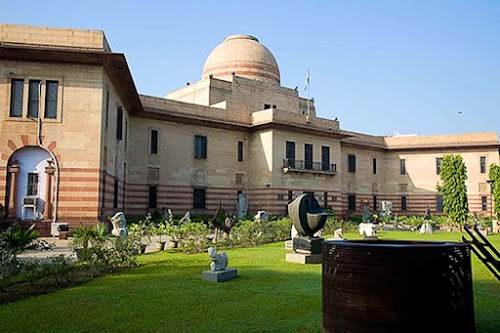
National Gallery of Modern Art
New Delhi, India
- Admire the serene sculpture garden
- Attend temporary exhibitions and art workshops
- Browse the art library and shop
- Explore the diverse collection of Indian and international art
- Participate in lectures and film screenings
Known for:
Description:
The National Gallery of Modern Art (NGMA) in New Delhi is a premier art museum showcasing Indian and international modern and contemporary art. Its collection includes paintings, sculptures, graphics, and photography, spanning from the late 19th century to the present day. The NGMA features works by renowned Indian artists like Raja Ravi Varma, Rabindranath Tagore, Amrita Sher-Gil, and M.F. Husain, as well as international artists. The gallery also hosts temporary exhibitions, lectures, workshops, and film screenings. Its serene sculpture garden provides a tranquil space to appreciate art outdoors. The NGMA is an essential destination for art lovers, offering insights into the evolution of art in India and beyond. Its diverse collection and engaging programs cater to both seasoned art enthusiasts and casual visitors.
History:
The National Gallery of Modern Art, New Delhi, was inaugurated on March 29, 1954, by the then Vice President, Dr. S. Radhakrishnan. The initial collection primarily comprised works by European artists and Indian artists from the British Raj era, many of which were transferred from the Victoria Memorial Hall in Calcutta. Over the years, the collection significantly expanded to encompass a broader range of Indian and international modern and contemporary art. The building itself, Jaipur House, is a former royal residence designed by Charles G. Blomfield for the Maharaja of Jaipur, adding to the gallery's historical significance. The NGMA has played a vital role in promoting and preserving modern Indian art, establishing itself as a significant cultural institution.